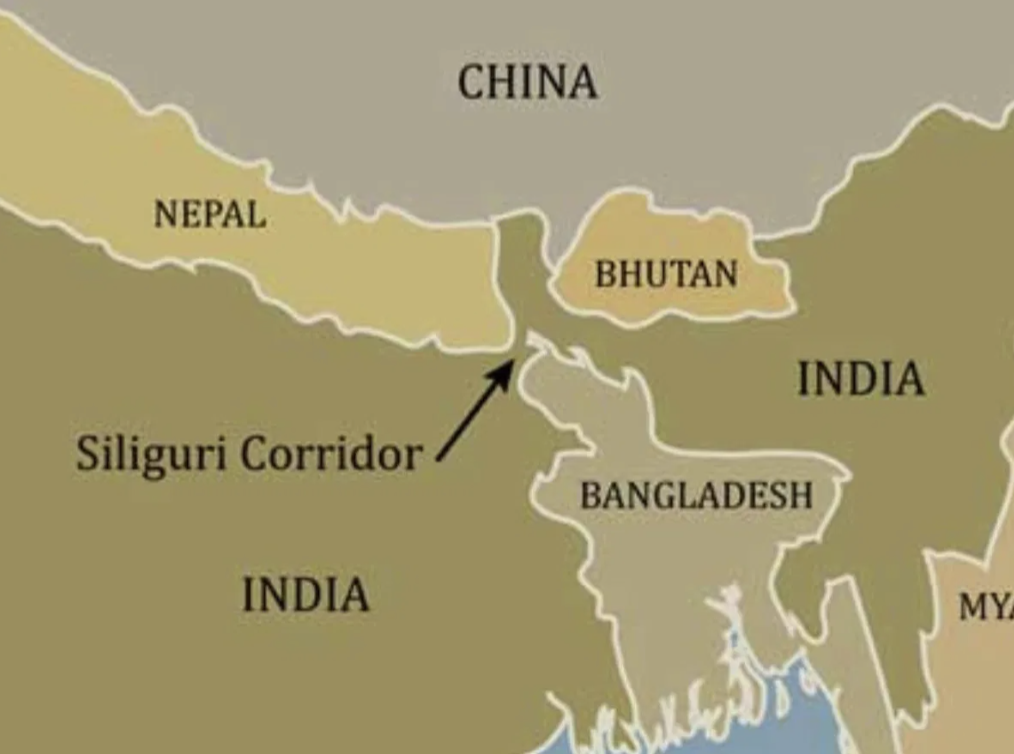The Siliguri Corridor, known as India’s “Chicken’s Neck”, became a crucial passageway after the Doklam crisis in 2017 between India and China. The corridor is a narrow 60km long and 22 km wide passage located in West Bengal. It connects the North-East with India’s mainland. It is not just an important trade rout but serves as a gateway to South-east Asia as well. Himalayan mountains such as Mount Kanchenjunga are the source of two major rivers known as Teesta and Jaldakha which merge in the Brahmaputra river when they enter Bangladesh.
The “Chicken’s Neck” is surrounded by Nepal, China, Bangladesh and Bhutan. The northeast region of India has a population of 50 million people and mostly Nepali and Bengali immigrants are found. Pertaining to the economy, the corridor serves as an important purpose for trade between the north-eastern states and the rest of India. It also hosts the only railway freight line between them.
The roadways and the railways near the Line of Actual Control are connected by the Siliguri Corridor. All essential supplies to the region are supplied through this corridor. The corridor also boosts India’s “Act East”policy by facilitating connectivity between India and its northeastern states as well as ASEAN countries in Southeast Asia. The corridor has also proved essential in countering illegal immigration, cross-border terrorism, and Islamic radicalisation in the northeastern states.
There is significant inflow of drugs from many South-East Asian countries to Indian states such as Tripura, Mizoram, Manipur, Nagaland, and Arunachal Pradesh. Improving the security in the Siliguri Corridor will result in securing the region from unwanted elements.
Coming to its close proximity with Tibet, a historical buffer between India and China, it helps India overlook Chinese activities such as the construction of roads and airstrips in the region. In the situation of war, weapons and troops can be mobilised easily through the Siliguri corridor.
Also, Beijing is investing heavily in countries neighbouring the Siliguri Corridor under the garb of developing its global trade reach for its notorious Belt and Road Initiative plan. These countries have become mired in a Chinese debt trap.
China want to get as close as possible to the Siliguri Corridor so that it can cut off India’s north-east from the mainland. This means the armed forces stationed in the North East will stop getting provisions and reinforcements requiring a complete rethink of India's military strategy. It also allows for conflict to rise in the North East as it gets away from India's direct administration. This gives China two-fold benefit as India's north-eastern troops fall in disarray and India's gets another headache of maintaining order in the North East.
China's presence in the area also gives it possible access to important Indian infrastructure. A hydro-electric project at Jaldhaka river at Jhalong, located close to the border. The project is also a bridge for crossing over to Bhutan.
China's damming of the river can turn water into a weapon should conflict arise as it can either turn off the water supply or flood the lower riparian States, the first one of which is India. Further, Chinese actions affect not only India but also Bangladesh which is the lower riparian State in the picture. Any arrangement vis-a-vis the Brahmputra must then be a trans-national one, a fact which India can use to its advantage if it can get Bangladesh in its corner.
China's dams will also affect the livelihoods of people who are depending on the Brahmputra for small-scale fishing and subsistence agriculture. There is also the problem of the ecosystem being affected which will have an impact on fishing in the entire South East Asia where fish is a major source of food.
Cutting off the “Chicken’s Neck” from India’s mainland serves as an important agenda for China and steers it’s ambitions of limiting India’s influence in the region. Therefore, protecting the Siliguri Corridor is of utmost importance to India not only to limit China’s influence in India but also around India as the strategically important corridor overlooks Chinese activities in the Doklam Plateau as well.
